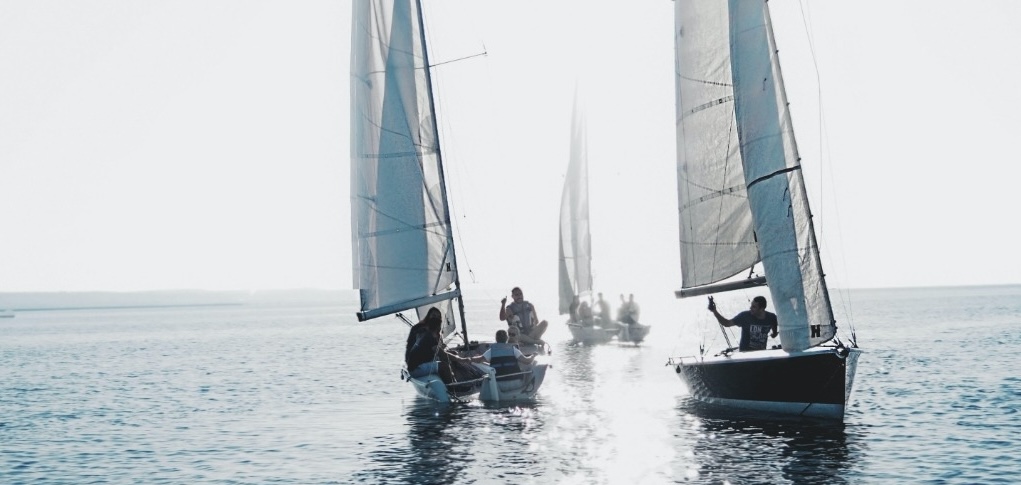SailZoo Blog
Engine failure at sea: What to do when things go wrong
In this article, we provide practical advice on how to prevent engine failure and handle situations effectively if it occurs. We also outline essential preparations and maintenance tips to help you avoid problems at sea, ensuring a safe and enjoyable sailing experience.

Most sailors encounter engine problems at some point. While some issues can be resolved independently, others require professional assistance. Good preparation and consistent maintenance are crucial to minimise risks.
Engine failure: A common issue
Last year, the Royal National Lifeboat Institution (RNLI) conducted over 8,000 rescue missions. According to their reports, a significant number were related to engine problems or groundings. This highlights the importance of proper engine maintenance and preventive measures, which we explore below.
For example, common causes of engine failure include clogged fuel filters, empty fuel tanks, and overheating due to a malfunctioning cooling system. Ensuring proper lubrication by maintaining oil and fluid levels is also critical.
By performing regular maintenance, such as checking filters, oil levels, and the fuel system, you can significantly reduce the risk of needing emergency assistance. These simple actions not only prevent issues but also extend your engine's lifespan.
For example, common causes of engine failure include clogged fuel filters, empty fuel tanks, and overheating due to a malfunctioning cooling system. Ensuring proper lubrication by maintaining oil and fluid levels is also critical.
By performing regular maintenance, such as checking filters, oil levels, and the fuel system, you can significantly reduce the risk of needing emergency assistance. These simple actions not only prevent issues but also extend your engine's lifespan.
How to prevent engine failure
Follow these five key sailing guidelines to ensure safety at sea:
- Learn to sail.
- Keep your equipment in good condition.
- Plan your journey.
- Have a reliable communication line to land.
- Always wear a life jacket.
Make it a habit to inspect your gear before every trip. Check the following:
- Ensure the fuel-water separator is free of water.
- Verify that there is enough fuel for the journey, with extra in reserve.
- Check the oil level with the dipstick and ensure the cooling system is functioning by looking for water flow or steam in the exhaust.
For professional assistance, consult our comprehensive list of marine mechanics for expert advice and services.
Diesel engines and diesel bug
If you own a diesel engine, it’s vital to be aware of diesel bug – microorganisms that thrive in fuel tanks containing water. Diesel bug can clog filters and starve the engine of fuel, leading to a breakdown.
Here’s how to prevent diesel bug:
- Keep the tank full to minimise condensation.
- Use marine-grade diesel and avoid old fuel.
- Add fuel additives to reduce water content.
If your system is already contaminated, clean the fuel tank, lines, and filters thoroughly. This involves draining the tank, using a suitable cleaning agent, and flushing the system with fresh fuel. Replace filters as needed.
For further advice on diesel engines, explore our guide to common diesel engine problems.
What to do if your engine fails
If your engine fails despite your best efforts, follow these steps:
-
Assess the situation: Determine your location and evaluate the severity of the issue. If you’re drifting towards danger, such as a shipping lane, act quickly.
- In emergencies, contact the UK Coastguard on VHF Channel 16 or call 999.
- Secure the boat: Deploy an anchor to stabilise your position and buy time to assess the problem.
- Use a sea anchor in rough conditions: If you’re in deep water or facing strong winds and currents, a sea anchor can slow your drift and stabilise the vessel. If you don’t have a sea anchor, improvise with rope tied securely on both sides of the boat.
-
Call for help:
- Use VHF Channel 16 to contact nearby vessels or the Coastguard.
- Install the RYA SafeTrx app to share your position and seek assistance quickly.
- Be prepared for delays: Always carry extra food, water, and warm clothing to stay comfortable while awaiting help.
Find professional help for your engine
If you need assistance with your boat, explore our resources:
- Marine mechanics are specialised in engine maintenance and repairs, including mechanical and fuel-related issues like clogged filters or overheating.
- Marine electricians are experts in diagnosing and repairing electrical problems affecting engine operation, such as faulty batteries or ignition systems.
Professional help ensures your boat remains in optimal condition, reducing the likelihood of future issues.
Additional resources
To enhance your knowledge and preparedness, explore these resources:
- Read the RNLI’s Annual Reports
- Learn about safety at sea
- Download the RYA SafeTrx app
- Watch a guide on engine failure handling
With these tips and resources, you’ll be well-equipped to handle unexpected situations at sea. Remember, regular maintenance and careful planning are the keys to safe and enjoyable sailing.
Written by Mads SailZoo day 6. June 2024

Sign up for newsletter
Stay tuned for new sailing articles, sailing industry news and early access to new features.
Also see








.png/)


.png/)




.png/)


